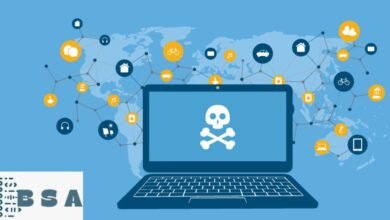Semantic Error Chapter 80: Unraveling the Mysteries of Semantic Errors

Introduction
In the realm of programming, errors are not uncommon, yet among them, semantic errors hold a unique place. They are often elusive, hiding beneath the surface of code, waiting to manifest at the most inconvenient times. In this article, we’ll delve deep into the enigmatic world of semantic error chapter 80, shedding light on its nuances, causes, and solutions.
Understanding Semantic Error Chapter 80
Semantic error chapter 80, also known as a logic error, occurs when code runs without syntax errors but does not perform as intended due to flawed logic. Unlike syntax errors, which are caught by the compiler, semantic errors evade detection until runtime, making them notoriously challenging to debug.
Semantic errors arise from misunderstandings of program requirements or incorrect assumptions about how certain operations should behave. They can lead to unexpected outcomes, logical inconsistencies, and in the worst cases, system failures.
Identifying Semantic Errors
Semantic error chapter 80 in Real-world Applications
In real-world applications, semantic errors can manifest in various ways, from incorrect calculations in financial software to malfunctioning algorithms in autonomous vehicles. These errors often stem from gaps in understanding between developers and end-users or insufficient testing procedures.
Debugging Semantic Errors
Debugging semantic errors requires a systematic approach that involves thorough code review, testing, and logical analysis. Developers must scrutinize their code for logical fallacies, review requirements documentation, and simulate different scenarios to uncover hidden flaws.
Common Causes of Semantic Errors
Misunderstanding Requirements
One of the primary causes of semantic errors is a misunderstanding of project requirements. When developers misinterpret specifications or overlook critical details, they may implement incorrect logic, leading to semantic errors.
Incomplete Testing
Insufficient testing is another common cause of semantic errors. If developers fail to test their code under various conditions or overlook edge cases, they may overlook logic flaws that only manifest in specific scenarios.
Complexity
The complexity of modern software systems also contributes to the prevalence of semantic errors. As projects grow in scope and scale, managing interdependencies and ensuring consistent logic becomes increasingly challenging.
Addressing Semantic Errors
Refactoring Code
To address semantic errors, developers often need to refactor their code, reorganizing and restructuring it to improve clarity and logic. By breaking down complex algorithms into smaller, more manageable components, developers can isolate and correct logic flaws more effectively.
Comprehensive Testing
Thorough testing is crucial for identifying and rectifying semantic errors. Developers should implement comprehensive test suites that cover all aspects of the software, including edge cases and boundary conditions.
Continuous Improvement
Preventing semantic errors requires a commitment to continuous improvement. Developers should cultivate a culture of code review, knowledge sharing, and learning from past mistakes to minimize the risk of recurrence.
FAQs
What is the difference between syntax errors and semantic errors?
Syntax errors occur when code violates the rules of the programming language, whereas semantic errors involve flawed logic that leads to unexpected behavior.
How can I keep my code free of semantic errors?
To prevent semantic errors, ensure thorough understanding of project requirements, conduct comprehensive testing, and refactor code regularly for clarity and consistency.
Why are semantic errors difficult to debug?
Semantic errors are difficult to debug because they do not cause immediate failures and may only manifest under specific conditions, requiring careful analysis and testing to uncover.
Can automated testing tools detect semantic errors?
While automated testing tools can detect certain types of semantic errors, such as inconsistencies in naming conventions or unreachable code, they may not identify logic flaws that require human reasoning to uncover.
What role does peer review play in preventing semantic errors?
Peer review is essential for identifying logic errors and ensuring code quality. By soliciting feedback from peers, developers can catch overlooked flaws and gain insights into alternative approaches.
Are there tools available specifically for debugging semantic errors?
While there are tools designed to aid in debugging, such as static code analyzers and integrated development environments (IDEs), debugging semantic errors often requires human judgment and reasoning.
Conclusion
In conclusion, semantic error chapter 80 is a pervasive challenge in software development, requiring diligence, expertise, and collaboration to overcome. By understanding the root causes of semantic errors and adopting best practices for prevention and resolution, developers can minimize their impact and build more robust, reliable software systems.



